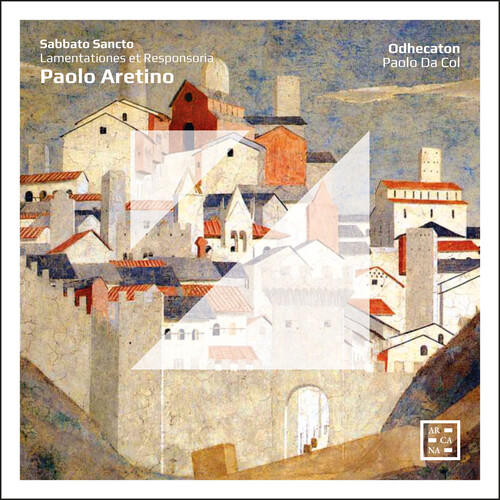Show results for
Deals
- 4K Ultra HD Sale
- Action Sale
- Alternative Rock Sale
- Anime sale
- Award Winners Sale
- Bear Family Sale
- Blu ray Sale
- Blues on Sale
- British Sale
- Classical Music Sale
- Comedy Music Sale
- Comedy Sale
- Country Sale
- Criterion Sale
- Electronic Music sale
- Fantasy Film and TV
- Folk Music Sale
- Hard Rock and Metal Sale
- Horror Sci fi Sale
- Jazz Sale
- Kids and Family Music sale
- Kids and Family Sale
- Metal Sale
- Music Video Sale
- Musicals on Sale
- Mystery Sale
- Naxos Label Sale
- Olive Films on Sale
- Page to Screen Sale
- Paramount Sale
- Pop and Power Pop
- Rap and Hip Hop Sale
- Reggae Sale
- Rock and Pop Sale
- Rock Legends
- Soul Music Sale
- TV Sale
- TV Sale
- Vinyl on Sale
- War Films and Westerns on Sale

Sabbato Sancto - Lamentationes Et Responsoria
- Format: CD
- Release Date: 9/22/2023

Sabbato Sancto - Lamentationes Et Responsoria
- Format: CD
- Release Date: 9/22/2023
- Composers: Paolo Aretino
- Label: Arcana Records
- UPC: 3760195735510
- Item #: 2633313X
- Genre: Classical Artists
- Release Date: 9/22/2023

Product Notes
Within the Italian polyphonic repertoire for Holy Week of the first half of the 16th century; a group of works that particularly stands out for it's organic; comprehensive and unique qualities are the two books of four-voice Lamentations and responsories for the office of Tenebrae from the Triduum sacrum composed by Paolo Aretino (Paolo Antonio del Bivi; 1508-1584). They were published respectively in 1544 (the responsories: a first printed edition of it's kind; to the best of our knowledge) and 1549 (the Lamentations). Both books were reprinted in 1563; a rare occurrence for a collection of this type. Aretino; a maestro di cappella at both the cathedral and Santa Maria della Pieve in Arezzo; was acclaimed in his own day as a true symbol of the city's glory; along with his fellow-citizen; the famous writer Pietro Aretino. He also had repeated contacts with the Medici court; and indeed certain characteristic features of his style can be traced to the late-15th century Florentine tradition of regularly using polyphony during the Triduum. In particular we note his use of equal voices and; above all; the adoption of an austere and solemn declamatory style closely linked to the structure of the text. All of this; however; is not only conveyed with extreme refinement; but also includes some very striking encroachments into vocal ranges rarely found in contemporary Italian music. An example is the use of two or three bass voices together with a low bass; as happens; for example; in the Lamentations for Holy Saturday; which in this recording are presented complete; together with their respective responsories.

